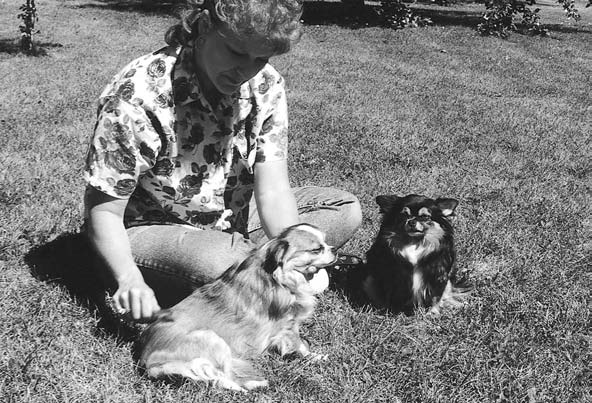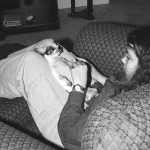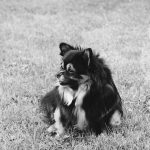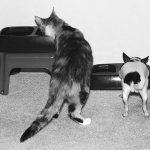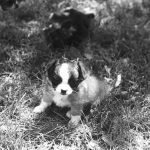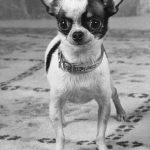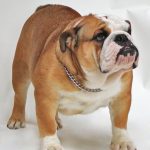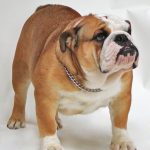In This Chapter
- Reviewing Chihuahua coat care
- Checking your Chi’s ears
- Brushing up on teeth, toenail, and eye care
- Executing bathtime with a Chi
You want some really good news? Less than five minutes of daily grooming keeps your Chihuahua squeaky clean! But the benefits of grooming go way beyond time considerations. Brushing, for instance, helps his skin and coat stay healthy by stimulating circulation and the secretion of natural oils. It also removes dirt, dead hair, loose skin particles, and dandruff.
Grooming also makes a Chi more lovable. After all, whether his coat is sporty smooth or luxuriously long, nice, clean hair is mighty inviting for petting and hugging. No one likes to snuggle with a smelly, matted dog that’s frantically scratching itself. Smelly! Not your Pepe! Don’t worry. In this chapter, I talk about how just a few minutes of your time can keep your Chihuahua’s coat enticing to the touch. I also discuss how you can care for his ears, teeth, nails, and eyes, and I finish up with a section on bathing your little guy.
Keeping the Shine in Your Chihuahua’s Coat
Grooming your Chi’s coat daily is ideal, but if that isn’t possible, make three times a week the bare minimum. Caring for his coat gives you a chance to look for lumps and bruises, scratches and skin infections, and for signs of external parasites like fleas and ticks (see Chapter
Debugging de Dog). Everything is easier to treat when discovered early.
Tip
Although most ticks are easy to spot on a smooth’s sleek coat, they’re a little harder to find on a long coat. Favorite hiding places are in the ears, just behind the ears, between the toes, in the thick neck hair, or in the rump area just before the tail. To uncover fleas, rough your Chi’s coat in the opposite direction from the way it grows. You may not see any of the minuscule pests move, but tiny black specks on the skin will tell you that fleas are having a free lunch courtesy of Pepe. If you see the telltale specks, ask your veterinarian to recommend a treatment program (see Chapter Debugging de Dog) and use the products exactly as recommended.
The following sections give you some general coat care advice, discuss grooming tables, and take you through the process of brushing your Chi’s coat.
Technical Stuff
A Chihuahua’s coat grows in cycles. As it grows, it should look glossy, but eventually it stops growing, dries out (doesn’t look quite as shiny), and finally is shed. The cycle takes a little more than one-third of a year, or about 130 days, but it varies considerably between Chis. In fact, smooth coats shed some hair all the time. Dogs that spend a lot of time outdoors always shed their winter coats in the spring, but because Chis are house pets and don’t always grow winter coats, they tend to shed on their own personal schedule.
Early starts are best
How soon do you start grooming your pretty puppy? As soon as he settles in — just a day or two after you get him (see Chapter
Welcome Home, Little Amigo). Condition your Chihuahua from puppyhood to accept grooming as a fact of life, and he’ll soon learn to like it. Talk to him softly at first as you work on him (go on, tell him what a handsome fellow he is!). If he becomes fidgety about being handled on any part of his body, say “No!” sharply and firmly (but not loudly or in a threatening tone) and continue grooming gently. Soon the sessions will become routine.
Warning!
If your pup is adamant about not wanting you to touch a certain part of his body — his feet, for example — don’t force the issue. Instead, use the peaceful ploy I present at the beginning of Chapter Socializing Your Chihuahua.
Grooming tables
You can groom your Chihuahua on your lap or another surface with traction if he cooperates (see Figure 7-1), but some Chi owners prefer placing their dogs on grooming tables. Special tables just for grooming are available through pet supply stores, at booths at dog shows, or in animal supply catalogs. They even come in small sizes for Toy dogs.
Tip
You can also create your own grooming table. Any tabletop does well as long as it’s the right height for you to work on and stands absolutely steady, without even a hint of a wobble. Provide traction by attaching rubber matting to the top of the table. And never turn your back when your dog is on the table — not even for an instant.
Brushing
Whether your Chi is a smooth or a long coat (see Chapter
What’s Behind That Unique Chihuahua Look?), you’ll wear less of his hair and he’ll stay cleaner and need fewer baths if you brush him regularly. Just before brushing, give him a full-body massage. He’ll love it because it feels good, but it serves a functional purpose, too: You’re actually stimulating his skin and examining him from head to toe at the same time. Figure 7-1 shows a Chi undergoing such an examination. Now you’re ready to brush.
The general brushing process
Grab a natural bristle brush for your brushing duties and then follow these steps:
1. Place your dog so he faces away from you on your lap or on a nonslip grooming table.
2. Start brushing his body against the lay of the hair, from just in front of his tail to the top of his neck.
Giving a few strokes in the opposite direction of hair growth is the quickest way to loosen his dead hair. Do the same along each side.
3. Brush his back, sides, neck, and legs in the same direction as his hair grows.
Figure 7-1: During grooming, examine your dog from head to toe.
4. Gently turn him upside down in your lap or on the table and brush his chest, belly, and the underside of his neck.
5. Place him right-side up and, if he’s a smooth coat, finish by brushing his tail.
6. Praise him for being such a cooperative boy and give him a treat!
That’s all there is to it unless today is teeth-cleaning or toenailtrimming day. I tell you how to handle those procedures later in this chapter.
Brushing a long coat
If your Chihuahua is a long coat, you need a rubber comb for the finishing touches after you complete the general steps (see the preceding section). With your Chi right-side up, comb his ear fringe and the long hair on his legs (see Figure 7-2 for an example of a groomer making her way to the legs). Be gentle, but make sure you get all the way to the skin. Next, brush his tail and then comb it. Simple as that — unless his coat is (horrors!) matted.
Figure 7-2: Cindi Zablocki grooms her long coats outdoors during nice weather.
Technical Stuff
Chihuahua long coats have their own lingo. The hair on their legs is called furnishings; the tail hair is a plume; and the fine hair falling from their ears is called fringe.
Mats (balls of hair you can’t get a comb through) seldom occur on a dog that’s groomed daily, but when they do, they usually show up just behind the ears. (Of course, leg hair and tail hair is also susceptible to matting.) You can loosen minor mats with your fingers by separating each hair patiently until the mat is gone. An implement called a mat splitter (available at pet supply stores) usually is necessary for major mats. The splitter loosens the mat while removing the worst of it. Use it gently or it can hurt your Chi’s skin and make him wary of grooming.
If you have a long-coated Chi that has gone ungroomed for too long, your best bet is to take him to a professional groomer. The pro will bathe your pup, remove the mats, trim his toenails — basically, she’ll put your Chi’s coat back in shape so you can easily care for it yourself.
Remember
Do your clothes and furniture look furry? Don’t blame poor Chi. All that dead hair would be on your grooming brush rather than your navy suit if you brushed him daily.
Ears Looking at You Chi!
Don’t forget your Chihuahua’s perky ears when giving him the grooming once-over. Healthy ears are pinkish on the inside, and their edges are smooth. They don’t have nicks, splits, or places along the edge where the hair is stuck together as if smeared with dark glue. When something is wrong, your nose may be the first to know. That’s because nasty odors or discharges are early signs that ear mites have set up camp. These pests live in the ear canal, irritating your Chihuahua’s sensitive ears and producing a dry, rusty-brown or black discharge.
Even if no unusual odor or discharge is present, suspect something if your Chi paws at his ears, shakes his head, or stands with his head unnaturally cocked to the side. Ear mites are easily banished, and ear infections are quickly cured, when discovered early. As soon as you see any of these signs of trouble, visit your veterinarian.
Remember
Are your dog’s ears driving you crazy because they’re erect one day and flopped over the next? The ears may be all over the place because he’s teething. A Chi’s ears generally stay up by the time it’s 6 months old, but if your Chi’s ears are still hanging like a hound dawg’s by the time he’s 8 months old, you may as well learn to like it. They’re going to stay that way!
Keeping Those Pearlies White
According to the American Veterinary Medical Association (AVMA), 80 percent of adult dogs develop gum disease by the time they’re 3 years old. That is outrageous and unnecessary. If you brush your Chihuahua’s teeth three or four times a week (no, I’m not kidding), you can keep plaque under control.
If you can, start when your Chi is a puppy so he can become accustomed to having his teeth brushed. For puppies and older Chis, follow these steps to start down the road to a healthy mouth:
1. Begin by letting him get used to you lifting up his lips and gently touching his teeth and gums with your finger.
The more matter-of-fact you are about it, the sooner he’ll learn to live with it.
2. When he stops pulling away from your finger, introduce him to a soft toothbrush; either the smallest one made for dogs or one made for human babies.
At first, just touch his teeth with it, but gradually apply a little more pressure.
3. When he tolerates that, move the brush so it touches his back teeth and gradually add pressure.
4. Finally, use a gentle up-and-down brushing motion all around his mouth.
It won’t be long before you can clean all of his teeth with relative ease.
Pet supply stores sell toothpaste and toothbrushes for dogs in a variety of flavors; you may even find one that makes your pup look forward to his brushings. But don’t count on it! If he hates all the varieties you try, using plain warm water is better than no brushing at all.
Warning!
Never use a toothpaste meant for people on your Chihuahua. Adult toothpaste is bad for dogs and probably upsets their stomachs.
Tip
At least once a year (twice is better), ask your vet to check your Pepe for plaque or early signs of gum disease. A professional cleaning may be necessary if his teeth have been neglected for years.
The following sections dig a little deeper into a couple more oral issues you should consider.
Removing retained puppy teeth
Dogs, just like people, have two sets of teeth during their lifetimes. The puppy, or deciduous, teeth should all be gone by the time your Chi is 6 or 7 months old, replaced by permanent teeth. But that isn’t always what happens. Toy dogs often have a problem with deciduous teeth refusing to fall out to make room for the emerging permanent teeth. This creates havoc in a dog’s mouth. When permanent teeth can’t slip into their slots because baby teeth are blocking them, they grow in whatever direction they can. The result is a mouthful of crowded teeth pointing every which way.
Now that you’re aware of the possibility, don’t let it happen to your dog. Just by looking into his mouth, you can tell if a new tooth is trying to emerge before a baby tooth falls out. Take him to your veterinarian so she can remove the retained baby tooth so that the permanent one can come in strong and straight.
Heeding the symptoms of gum disease
If your Chihuahua was an adult when you got him, he may already have gum disease. The symptoms of gum disease are
- Bad breath
- Swollen, bright red, or bleeding gums
- Tartar against the gum line
- Loose or infected teeth
Sometimes dogs that appear to be finicky eaters actually are hungry, but they have such sore mouths that they chew only enough to survive. If your pup has any symptoms of gum disease, see your veterinarian right away.
Technical Stuff
Most adult dogs have 42 permanent teeth, but Toy dogs, with their tiny mouths, often have fewer than that.
Puppy-cure: Trimming the Toenails
A Chihuahua’s toenails are too long if they make clicking noises on the floor when he walks or touch the ground when he stands still. Dogs with long nails are forced to walk on the backs of their feet, leading to splayed (that’s dog lingo for “spread”) toes and an awkward gait. When untrimmed for months, toenails and dewclaws (the higher, useless extra toenail that your dog may or may not have) eventually curl under the foot, circling back to puncture the pads.
Technical Stuff
Are you wondering why wolves, coyotes, and even stray dogs trot along just fine even though no one trims their toenails? In their quest for food, these animals cover enough ground to wear down their nails to a practical length — something that won’t occur during Pepe’s stroll from the carpet to the tile.
Trim your dog’s toenails a minimum of once a month; once every two weeks is better. My favorite type of toenail clipper for Chihuahuas is the small, guillotine-style implement, although others on the market work just fine.
Tip
Don’t trim your Chi’s toenails during the first week you have him. Instead, get him used to having his feet touched first (see Chapter Socializing Your Chihuahua).
Some people use a grooming table when trimming nails (see the section “Grooming tables” earlier in this chapter); others do the clipping when their Chihuahuas are on their backs in their laps. Pick the place and posture that works best for you and your dog, and then follow these steps:
1. Start the job by lifting your Chi’s foot up and forward.
2. Hold his foot firmly but gently in your left hand so your right hand can do the trimming (reverse this if you’re left-handed).
3. Avoid cutting the quick by trimming the nail just outside of the vein.
You won’t be able to see the quick in dark nails, so trim just the tip of the nail, at the point where it starts curling downward. If he has white or light nails, your job is easier because the blood vessel inside each nail is easily seen through a light-colored nail.
Trim his nails properly, and your Chi will feel nothing more than slight pressure — the same as you feel when trimming your own toenails. If you accidentally cut the quick, his nail hurts and bleeds. Stop the bleeding with a styptic pencil made for people, or you can use the styptic powder sold at pet supply stores. In an emergency, pressing the bleeding nail into a soft bar of soap for a minute or so also will stop the bleeding.
Tip
Without a doubt, a dog prefers prevention. Work under good lighting so you can cut his nails without a mishap. Your dog may forgive a cut quick if it’s a rare occurrence; but if you hurt his toes often, he’ll struggle and scream when you try to work on his feet. Wouldn’t you?
Chihuahuas that are terrified of having their toenails trimmed morph into monsters at the sight of a toenail clipper. If your Chi is scared, it may take two people to accomplish the nail clip — one to hold him and the other to wield the clipper. But remember, regardless of how frustrating the job becomes, no rough stuff. That tiny leg you’re holding is breakable. If you can’t do the job safely at home, don’t hesitate to take your Chi to the veterinarian or a professional groomer for his trimmings.
Gazing into Your Chi’s Eyes
Oh, those big, beautiful eyes — the mirrors of a Chihuahua’s semisweet soul. To keep them sparkling, all you have to do (most of you, anyway) is occasionally wipe a bit of “sleep” out of the corners with a clean, damp cloth.
Does your Chi have stains under his eyes that make him look like a woman leaving a tearjerker movie with mascara traces on her cheeks? His stains are tearstains; but, trust me, your dog didn’t cry when Leonardo died in Titanic. When a Chihuahua has tear ducts that are too small, the overflow trickles down his face. To combat the issue, wipe the area every morning with a soft cloth dipped into distilled water (it becomes a habit like washing your own face).
Remember
Although no treatment for tiny tear ducts exists, check with your veterinarian about the issue anyway. Some tearstains may be caused by an infection called conjunctivitis; by entropian, a genetic condition where the eyelashes turn in and rub the cornea; or by ectropia, a condition where the lower eyelid sags and lets in foreign matter. Your vet needs to check out the situation. The good news is that these problems aren’t common in the Chihuahua.
If your Chi doesn’t have tearstains, his eyes won’t need any special care unless he develops a problem (see Chapter
Dealing with Sickness, Injury, and Other Considerations). Just use common sense in your day-to-day dealings. Don’t get shampoo in his eyes (even the tear-free type); never spray insecticide near his head; and don’t let him put his curious orbs out of the car window. If a small stone hits him in the face while you’re driving, the consequences can be tragic.
Bathing Your Beauty
Your Chihuahua seldom needs a bath if you brush him regularly (see the section “Keeping the Shine in Your Chihuahua’s Coat”). And that’s a good thing. Shampooing washes away the natural oils that moisturize his coat and skin, so bathe your Chi only when necessary — no more than once a month, unless he rolls in something smelly. Actually, many experts say one bath every two months is best. The following sections let you know what to bring to bath time, how to execute the bath, and how to properly care for your long-coated Chi.
The well-equipped bath
Gather up all your Chihuahua’s bathing equipment before you get started so you won’t have to turn your eyes away from a soapyslick dog after you begin. Here’s what you need:
– Old clothes for you
When your pup shakes, you get wet, too!
– A tub, preferably with a drain, so your Chi won’t have to stand in soapy water
Many Toy dog owners use the sink for baths, because it’s much easier on the back (and you can use the spray tool). But if you put your dog in the sink, don’t take your eyes or hands off him for even an instant. A leap to the floor could be fatal.
– A rubber bath mat for traction in the tub or part of a rubber mat to line the sink
– An unbreakable cup for dipping water or a spray hose attachment
– A pH-balanced dog shampoo, or insecticide shampoo or dip if necessary
– Coat conditioner for dogs (this is optional but nice — especially for long coats)
– Cotton balls
– A washcloth
– Mineral oil
– A nice fluffy, terry-cloth towel (100-percent cotton)
Let’s get wet!
The following list presents the simple steps (or so I say) for bathing your slick little Chi.
Tip
Wait! Before putting your Chihuahua into the tub or sink, take him for a walk outside and give him time to relieve himself. Otherwise, the excitement of bath time may make him want to or have to rush outdoors immediately after his bath, which is a bad idea. He needs to stay inside until he’s thoroughly dry, because Chis get chilled easily.
1. Begin by placing a cotton ball inside each of your dog’Technical Stuff ears (gently; don’t push it too far down) to keep the water out.
2. Spray or pour warm water (temperature test it on the inside of your arm) over his whole body, with the exception of his face and head.
Massage him gently as you wet him, helping the water soak in to the skin.
3. Put a few drops of shampoo on his back, spread it around, and massage the lather into his coat.
Add a drop or two as needed to soap his legs, underbelly, tail, and neck.
4. Now you’ve reached the most important part of the procedure: the rinse.
Never rush this step. If shampoo dries in his coat, he’ll itch like crazy and you’ll rob his hair of its shine.
5. After the rinse, use coat conditioner (optional), following the label directions and rinsing it out well.
6. After his body is rinsed, wet a washcloth in warm water, wring it out well, and wipe his face and head.
7. Remove the cotton balls from his ears and clean each ear gently (again, not too far down) with a fresh cotton ball dipped in a tiny bit of mineral oil.
8. Wrap him in a towel and dry him thoroughly — from his ear tips to his toes.
Pay special attention to his easily chilled chest and underbelly.
Finishing touches for your long coat
After towel drying your long coat, you need to finish the job with a hand-held blow dryer. Don’t spend much time drying the same spot, and don’t hold the dryer too close to his body, because the hot air can burn a Chi’s coat and skin. Use the warm setting (if your dryer has one) and blow his coat in the direction it grows — starting at his neck and working toward his plume (yup, that’s the tail).
When long-coated Pepe is dry, brush him with a natural-bristle brush. Then use a hard rubber comb on his ear fringe, furnishings (the long hair on his legs), and plume. Wow! I bet he’s gorgeous. And he knows it! Just watch him strut when you put him down.
Tip
Is the thick hair around your Chi’s anus often dirty? Use a pair of sharp scissors and trim away just a little bit of hair from each side of the anus and from just below it. That should keep it from becoming soiled during bowel movements. Trim carefully so you don’t break the skin.
by Jacqueline O’Neil
